
All categories
Featured selections
Trade Assurance
Buyer Central
Help Center
Get the app
Become a supplier

(2202 products available)




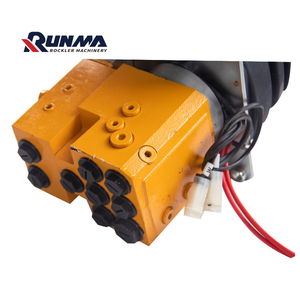

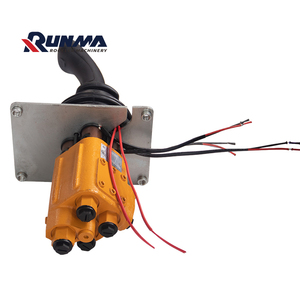

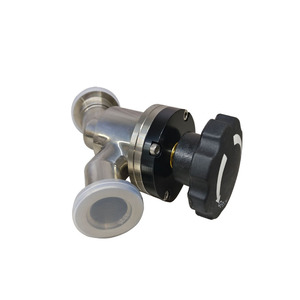











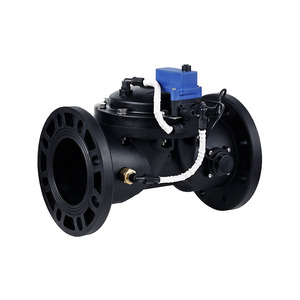


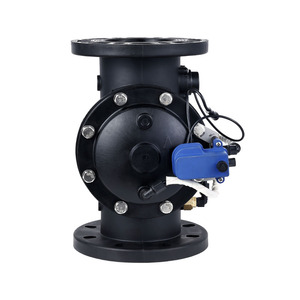







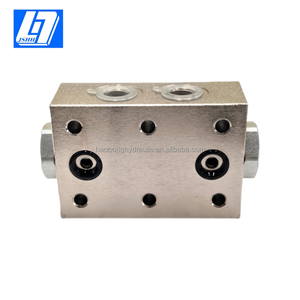







Hydraulic poppet valves are critical components in fluid power systems, controlling the flow and direction of hydraulic liquids. These valves are vital in various applications, from industrial machinery to aerospace systems. Through this section, different types of hydraulic poppet valves are explored.
Manual poppet valves are operated by hand, allowing users to control the hydraulic fluid flow precisely. These valves are commonly used in small-scale applications or as emergency overrides in larger systems. The manual operation provides a mechanical advantage, enabling users to close the valve with minimal effort. These valves are often used in hydraulic systems that require frequent adjustments, simple design, and low cost.
Solenoid poppet valves use electrical signals to control the valve's opening and closing. A solenoid actuator generates a magnetic force that moves the poppet, allowing fluid to pass through. These valves are used in automated systems where remote control or precise timing is required. Also, they are appreciated for their quick response and ability to handle high-pressure environments. Common applications include robotic systems, automotive brakes, and manufactured machinery.
Two-way poppet valves control the flow of hydraulic fluid between two points in a system. These valves have one inlet and one outlet, with the poppet sealing to either allow or block flow. Two-way valves are primarily used in simple circuits where fluid needs to be redirected between two actuators or components. These valves found widespread applications in pneumatic systems, hydraulic cylinders, and press machines.
Three-way poppet valves are more complex, controlling the flow of fluid to two different outlets. These valves have one inlet and two outlets, with the poppet alternating flow between the outlets. These valves are functional where a single fluid source needs to be distributed to two different actuators or components. They are commonly applied in hydraulic cylinders, clamps, and automated equipment.
Four-way poppet valves are used to control the movement of double-acting hydraulic cylinders. These valves have one inlet and four ports, directing fluid to both sides of a cylinder. These valves are widely used in complex hydraulic systems where precise control of cylinder movement is necessary. These valves have applications in construction equipment, industrial automation, and loading machinery, where synchronization and control are paramount.
For functionality and dependability, durability in hydraulic poppet valves is vital, especially in high-pressure and demanding environments. Here is an exploration of what goes into the durability of hydraulic valves.
Stainless steel, although more expensive than other materials, offers superior resistance to corrosion and wear, making it ideal for harsh environments. In cases of extreme pressure or heat, this material is also the strongest choice. Cast iron, a more cost-effective option, is often used in lower-pressure or less-demanding applications where corrosion resistance is not a primary concern.
Brass is commonly used as a mid-range cost, moderately durable option. This material is often applied in smaller systems or those that require resistance to galling. Carbon steel provides excellent strength and durability at a lower cost. It is commonly used in high-pressure applications where corrosion resistance is not critical. Aluminium alloy poppet valves are lightweight and corrosion-resistant. They are well-suited for applications in which weight reduction is essential.
Wear-resistant coatings, such as ceramic or nitriding, are applied to further enhance the durability of hydraulic poppet valves. These coatings provide a hard, wear-resistant surface that extends the life of the valve in abrasive or high-cycle applications.
Ceramic coatings are extremely hard and provide excellent wear resistance, making them ideal for harsh operating conditions. They are often used in high-performance hydraulic systems. Nitriding is a surface treatment that hardens the poppet by creating a hard layer of nitride on the surface. This treatment is commonly used to improve the durability of poppet valves in high-pressure applications.
The longevity of a hydraulic poppet valve is strongly influenced by its sealing system. The most common sealing materials used on hydraulic valves include:
Proper maintenance is important for ensuring the longevity of hydraulic poppet valves. Regular checks and replacements of worn seals, along with necessary lubrication, can greatly extend the lifespan of the valve, especially in high-demanding applications.
Hydraulic poppet valves are widely utilized throughout various industries because of their ability to control fluid flow precisely and reliably. What follows are some common commercial scenarios in which these valves are employed.
The construction industry relies on hydraulic poppet valves to control heavy equipment like excavators, bulldozers, and cranes. These valves regulate the movement of hydraulic cylinders, ensuring precise control of lifting, digging, and hauling operations. In these dynamic environments, Poppet valves' durability and ability to withstand high pressure are vital for the performance and safety of construction projects.
In the aerospace industry, hydraulic poppet valves are critical for controlling flight surfaces, landing gear, and other hydraulic systems in aircraft. These valves ensure reliable operation and safety in high-pressure and temperature environments. Their lightweight design and resistance to fatigue make them ideal for use in aerospace applications where performance dependability is essential.
In manufacturing, these valves control the actuators and cylinders used in automated machinery. They help in regulating the movement of robotic arms, conveyor belts, and other components, ensuring precise control in assembly, packaging, and material handling operations. Their quick response rate and reliability also make the valves vital for maintaining production efficiency in busy manufacturing plants.
Hydraulic poppet valves are used in marine applications to control the hydraulic systems of ships, submarines, and offshore rigs. These valves are important for operating critical systems like lifting equipment, stabilizers, and underwater vehicles. Poppet valves withstand the harsh environmental conditions and high pressures found in marine and offshore.
These valves are used to control the braking systems, power steering, and other hydraulic applications in this space. Their role in regulating the flow and pressure of hydraulic fluid allows for smooth and safe operations. The valves' reliability, durability, and ability to withstand high pressure make them essential for developing safe and long-lasting braking systems, steering mechanisms, and transmission systems.
To select the right hydraulic poppet valve for the system, there are key features to consider. Below is a rundown of the crucial features that impact valve performance.
It is always important to choose a valve that can withstand the maximum pressure in the hydraulic system. A pressure rating that exceeds system requirements to ensure safety and reliability will suffice. Operating at higher pressures than the valve can handle will result in valve failure and system breakdown.
Selecting the right valve that matches the required flow rate of the hydraulic system is important. In other cases, choosing a valve with a higher flow rate than needed is beneficial for system efficiency. However, going for a flow rate that is lower than what a valve can handle can lead to bottlenecks and inadequate performance. This issue may lead to reduced system efficiency and increased wear on components.
These parts are vital when selecting a hydraulic poppet valve for an application. Maintaining chemical compatibility between the valve and the hydraulic fluid, as well as resistance to wear and abrasion, are recommended when picking a valve for a system. On the other hand, temperature extremes require sealing materials that can withstand high or low temperatures. Ensure to pick a valve that matches the operational environment needs.
Selecting between manual, solenoid, or pneumatic actuation depends on the control requirements of the application. For instance, go for a manual valve for operations requiring human oversight. Conversely, solenoid or pneumatic actuation fits well when it comes to automated systems, as these valves provide quick and precise control. Always consider actuation power availability in the environment when going for solenoid or pneumatic actuated valves.
It is worthwhile to think about ease of installation and maintenance when going for valves. Valves with straightforward mounting configurations and accessible maintenance points will save time and effort in the long run. Finally, choose valves with clear operating instructions and support documentation. These features are important for ensuring proper maintenance and longevity in the days to come.
A.1 These valves control the flow direction and pressure of hydraulic fluids. They help regulate the movement and force of fluid-powered actuators and motors in machinery and industrial equipment.
A.2 Always consider operating pressure, flow rate, and fluid compatibility when selecting the right valve. Poppet valve materials, sealing options, and actuation methods should also be considered. These features ensure the selected valve meets the system requirements and performs reliably.
A3.3 Regular seal inspections and replacements, along with valve cleanings, are some of the recommended maintenance procedures. One should also ensure the operating conditions remain within the recommended limits and that fluid contaminants are filtered out.
A4.1 Brass, stainless steel, and carbon steel are the most popular materials used to manufacture hydraulic poppet valves. Brass provides a balance between strength and corrosion resistance. Conversely, stainless steel and carbon steel offer high durability in corrosive and high-pressure environments.
A5.1 These valves find applications in construction, manufacturing, automotive, marine, and aerospace industries. They work well in these industries because of their precision control, durability, and ability to withstand harsh conditions.